Counter Culture Labs, cradle of Bay Area biohacking
Published 20 March 2018 by Cherise Fong
Since 2012, Counter Culture Labs, the grassroots biohacklab in the East Bay of San Francisco, has been promoting open citizen science. A couple years ago, it also began cultivating mushroooms…
Oakland, special report (words and photos)
When you come to Omni Commons, all you need to do is knock on the door of this historic building, introduce yourself, and someone will let you in. In the rear of the empty foyer, at the end of a dark painted hallway, you will emerge into the hacker hall—half open source, half open science. On one side, Sudo Room, a hackerspace that aims to democratize technology at the neighborhood level; on the other, Counter Culture Labs, a collective for citizen science founded in 2012.

Counter Culture Labs (CCL) is one of the 11 collectives that constitute the self-governed volunteer association Omni Commons, which also includes Sudo Room, known for its workshops on DIY wifi, as well as East Bay Food Not Bombs, which has been cooking free community meals six days a week since 1991.
With the firm conviction that “biology is the technology of the 21st century”, CCL set up a DIY biolab from donated equipment and established a community space for anyone to tinker with biology, stimulate their curiosity, reappropriate science and carry out their own laboratory experiments. With neither public nor private funding, the organization operates entirely thanks to volunteers and the contribution of its members, who pay $80 each month for unlimited access.
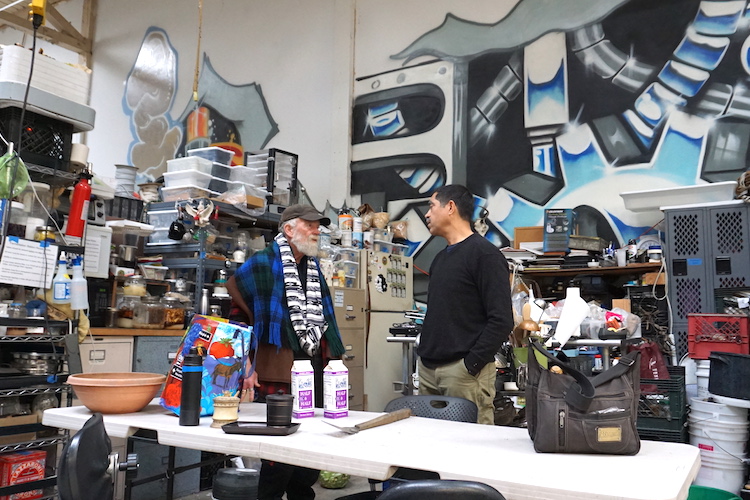
CCL hosts several ongoing projects and recurring events. Real Vegan Cheese members meet at the lab twice a month to engineer yeast to produce milk proteins to make cheese. MycoFermentoOmniMondo is a weekly gourmet evening around the fermentation of kombucha into tea, fruits into wine, vegetables, flowers, berries, mushrooms into tempeh and other arts and crafts with fungus, led by members of the collective Bay Area Applied Mycology (BAAM). Open Insulin is a structured research project to develop generic, low-cost, open source insulin.

Perpendicular to the lateral spray-painted wall mural, tables and shelves piled high with kitchen utensils, jars and miscellaneous containers form the soft edge of CCL’s space. Inside the lab, alongside the traditional biosafety cabinet and autoclave, are various machines received in exchange for lending a helping hand to Bio-Link (an organization that redistributes used equipment from the biotech industries to schools), a bioreactor on loan from a company that took a liking to one of the projects, a centrifuge acquired in an auction for $100, another device from the 1970s…
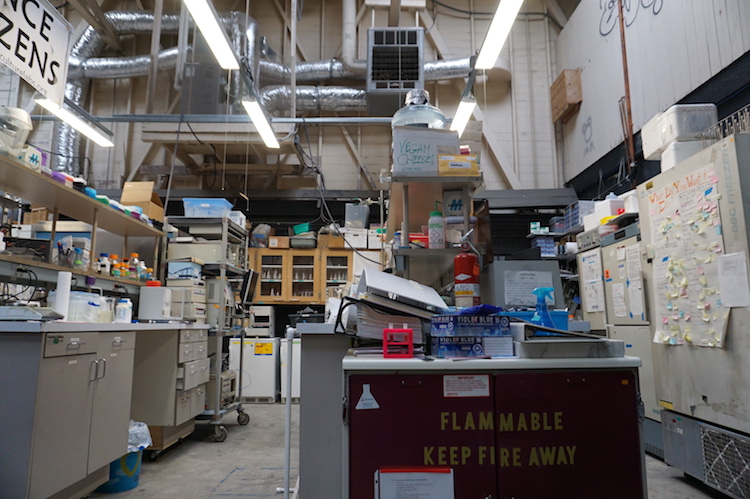
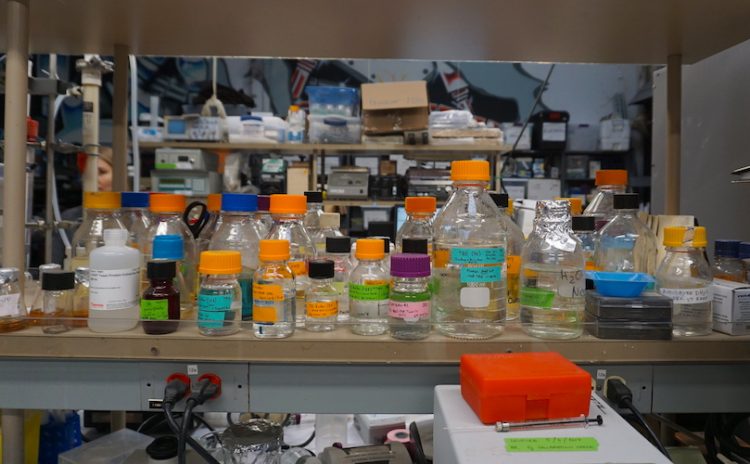
On a Tuesday evening, Yann Huon de Kermadec, a French scientist trained in protein biochemistry, is in the process of concentrating proinsulin that he has just purified. If he has enough, he’ll do some digestive tests using trypsin, with the objective of producing pure insulin. Later in the evening, he’ll share his findings with Anthony Di Franco, a CCL board member and the computer engineer with type 1 diabetes who launched the Open Insulin project in 2015. Meeting at the lab every Wednesday and Sunday, the team of volunteers also includes retirees, students, people between jobs looking to gain skills…
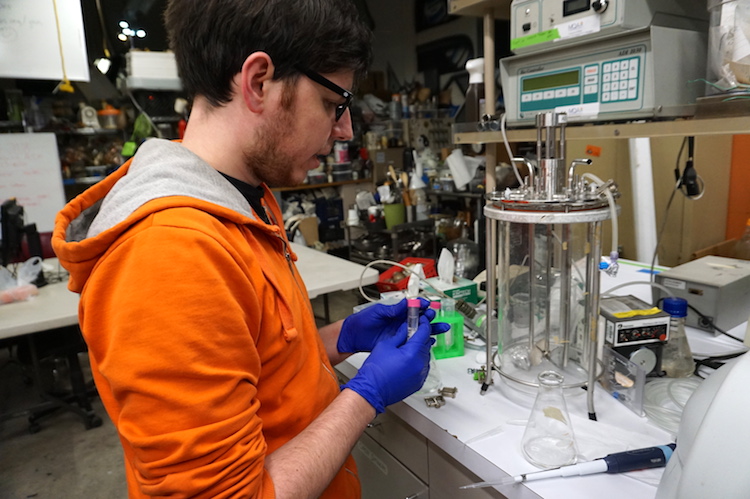
Since 2016, in a little room annexed to the CCL lab, BAAM has its own lab dedicated to mushroom cultures. “It’s a place to build your own mushroom library,” says Mario Gabiati, a passionate member of BAAM Labs. “We pour plates with a bunch of different kinds of agar medium, different kinds of sugars. Sometimes we’ll add an extract of soil or various nutrients. These experiments show the effects of two different kinds of agar on the same exact mushroom.”
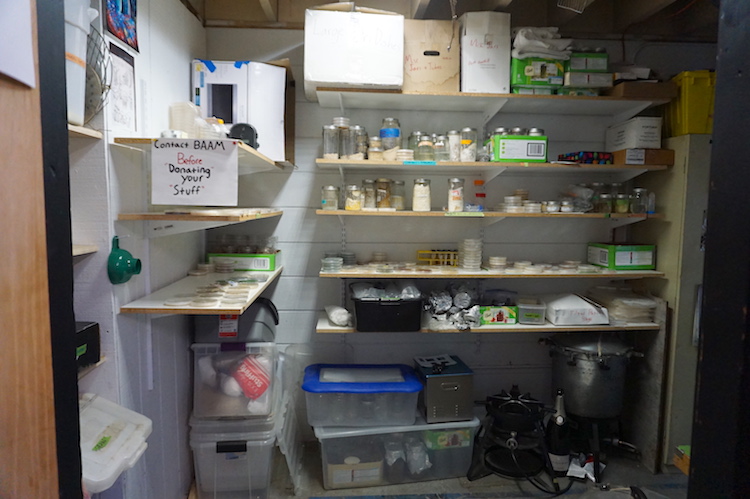
On one shelf, Mario points to a strain library in progress: “This is a popular edible Coprinus comatus. A kid came in here and wanted to have some for himself, so we also taught him how to plate his own organisms. I specifically work with this edible variety, Corniceps militarus. It’s used for ant control because it parasitizes different insects, but it’s also edible, even medicinal! I have a bunch of this one growing on these edible grains. I’m waiting for this thing to completely turn white and orange, then I’ll take it out and eat it.”
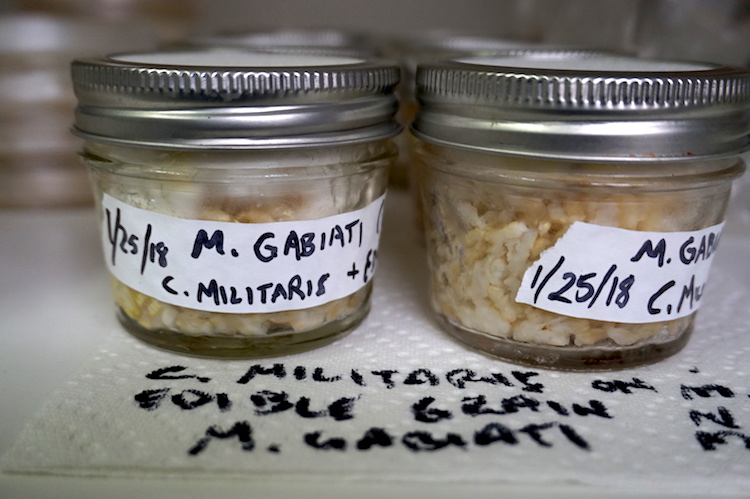
“I’m also interested in this kogi organism, or Aspergillus oryzae,” says Mario. “It’s the base of lot of Japanese foods: miso paste, soy sauce, etc. This one has a lot of bacterial contamination, you see where the fungus is growing, the bacteria isn’t. This one is growing out of the top, even though it’s already surrounded by bacteria. In food preparations you can imagine how powerful this is—not only is it able to grow around the bacteria, it can completely metabolize it. So it’s great for food handling, because if there is any bacteria in there, it’s going to destroy it.”
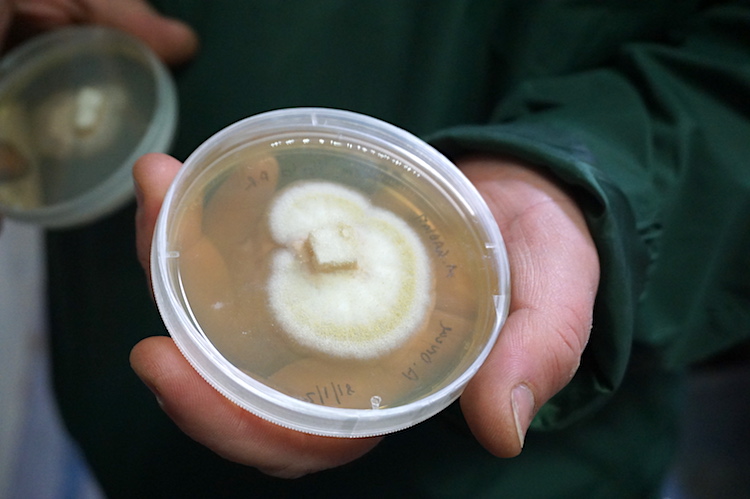
Another active lab member, mycologist Alan Rockefeller, spends several months a year in Mexico to collect mushroom samples, then returns to Oakland to spend the next several months sequencing their DNA. In the process, he makes significant contributions to open science, posting his detailed discoveries on websites such as Mushroom Observer and iNaturalist.
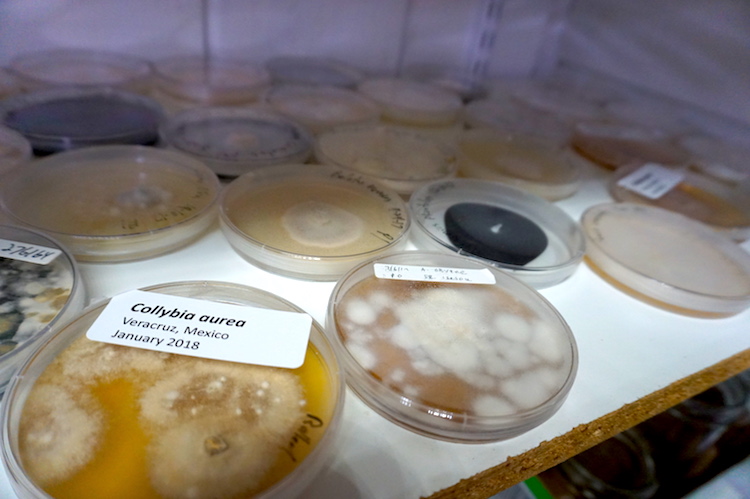
“Each type of mushroom grows completely different types of structures,” Mario continues. “These are Armillaria mellea, a root parasite that grows these rhizomorphs. It can find its way into a root and kill a tree… What’s interesting about growing these things in a Petri dish is that you get to see these crazy structures that are growing underneath the ground, that we don’t usually get to visualize. In this particular environment, even bread mold is really beautiful.”
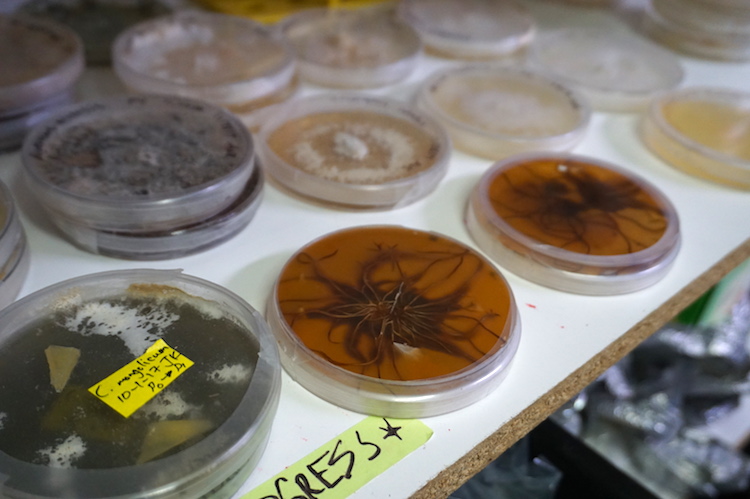
Mario encourages anyone who is curious to come to BAAM Labs to plate their own mycological experiments. The collective is often present at themed events and fairs around the Bay Area, while every other Tuesday, members give introductory mushroom workshops at CCL, such as how to grow oyster mushrooms out of straw inside a bag. Mario himself has a background in marine biology, but he was originally interested in foraging for mushrooms, intrigued by “this mystique with the porcini and the chanterelles”. Once in the lab, he was hooked: “It’s amazing how you can just plate it out, stick it in the room and watch it grow. You’ll learn stuff you didn’t even know you were curious about.”

